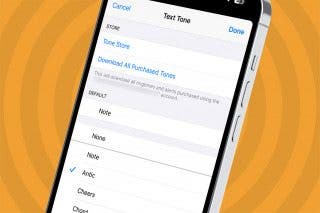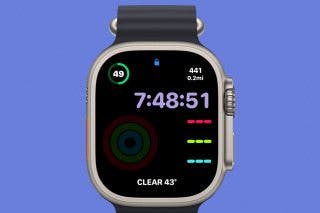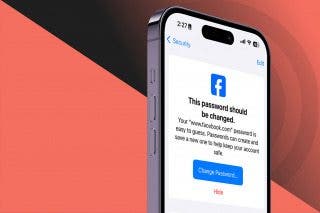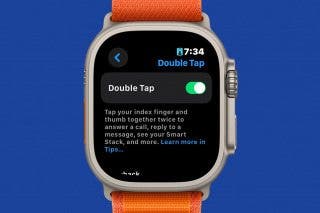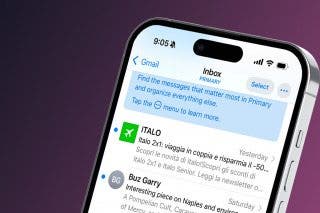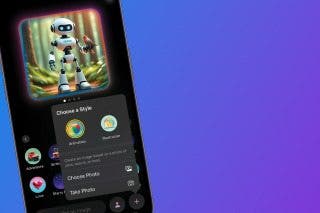Why Your Apple Watch Is Dying So Fast & How to Fix It


What to Know
- Your Apple Watch is always hard at work, even when you are not.
- Certain settings and background tasks are huge Apple Watch battery drainers.
- We’ll teach you how to alter your settings to optimize Apple Watch battery life.
Apple Watch battery life is significantly shorter than comparable smartwatches and fitness trackers. However, there are many things you can do to get the most out of your Apple Watch battery. We'll teach you non-intrusive ways to alter your settings that will add hours of valuable battery life.
How Long Does the Apple Watch Battery Last?
Before we can teach you how to save Apple Watch battery life, it's important to understand how long these devices are supposed to last. Apple Watch Series 9 and most earlier models are rated for about 18 hours of battery life. Apple Watch Ultra battery life is even more impressive, with the Ultra and Ultra 2 models rated for up to 36 hours. However, this is all dependent on what you are doing with your Apple Watch during those hours.
This Apple Watch battery life rating is based on several factors, including pairing with an iPhone and a standard number of notifications and tracked activities. Apple claims your Apple Watch Series 9 or earlier has enough battery life to perform 90 times, check 90 notifications, use an app for 45 minutes, and workout for 60 minutes while playing music on your watch via Bluetooth. If you use Family Sharing on your Apple Watch, you'll likely experience a shorter battery life.
Pro Tip
Make sure to check your Apple Watch battery health in your watch’s battery settings. Make sure your maximum capacity is over 80%, otherwise it may be time to get a new watch. If this happens while your watch is under AppleCare or AppleCare Plus, you might be able to get it fixed for a fee.
Why Does My Apple Watch Die So Fast & How to Fix It
Depending on how you use your Apple Watch, you may experience a lot more battery life than predicted by Apple, or you’ll see a much faster rate of Apple Watch battery drain. Here’s how to stop your Apple Watch dying fast and add hours of battery life.
1. Update Your Apple Watch to the Latest iOS
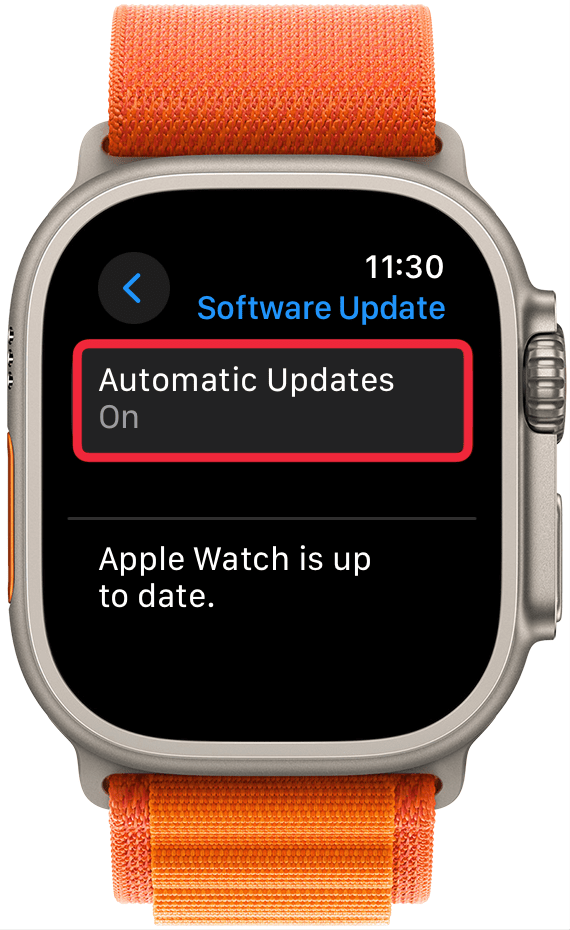
Sometimes, an app or feature will use up more of your Apple Watch battery due to a known issue that has already been resolved. It is always recommended to keep your Apple Watch up to date to keep it running as smoothly (and safely) as possible. Do keep in mind that right after an Apple Watch update, you may have a few hours or a day when your battery drains faster than usual because of background tasks to complete the update. It can be a good idea to restart your Apple Watch after you’ve successfully completed an update to reduce battery drain.
2. Restart Your Apple Watch
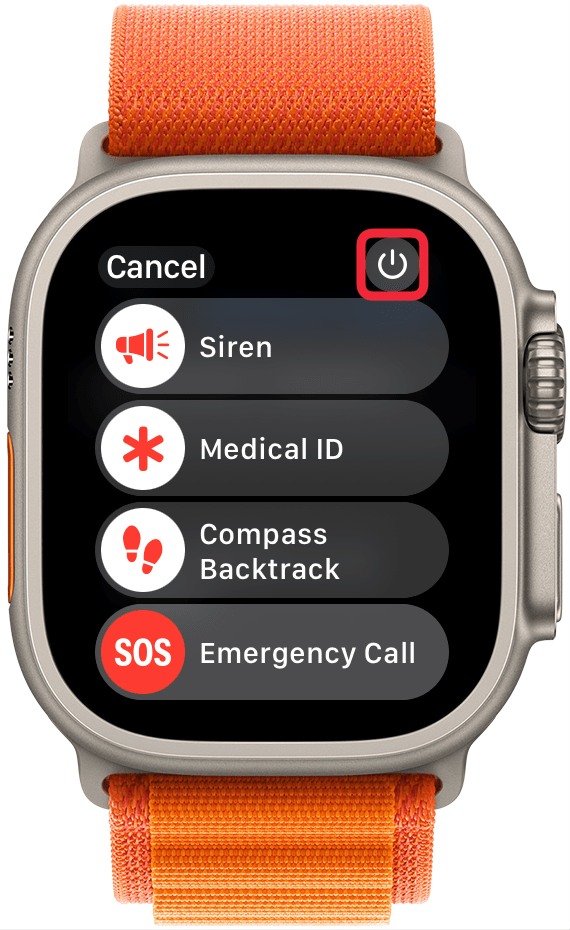
Turn your Apple Watch off then back on again by pressing and holding the Side Button until you see the off button. Once off, press and hold the Side Button again until it turns back on. Restarting an Apple Watch can fix any glitches that are happening, including ones that are causing abnormal battery drain.
3. Disable “Siri” or “Hey Siri” on Your Apple Watch
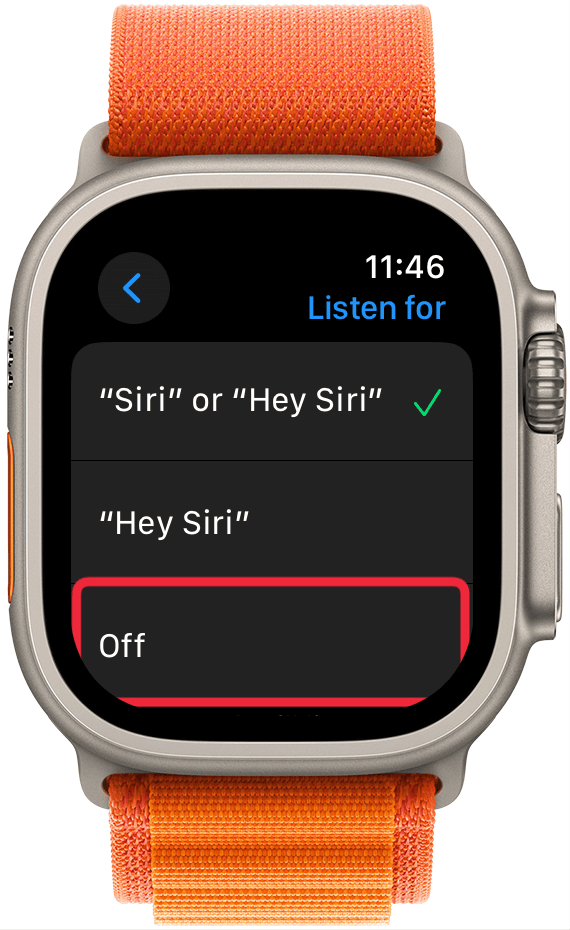
When you toggle on Listen for “Hey Siri”, your Apple Watch will be actively listening for you to activate Siri whenever your watch face is on. This can cause extreme battery drain, so toggling off Listen for “Hey Siri” is a must. I also recommend toggling off raise to speak and only keeping Press Digital Crown since that is the most practical way to only wake Siri when you mean to that won’t waste your battery.
4. Turn Off Wake on Wrist Raise
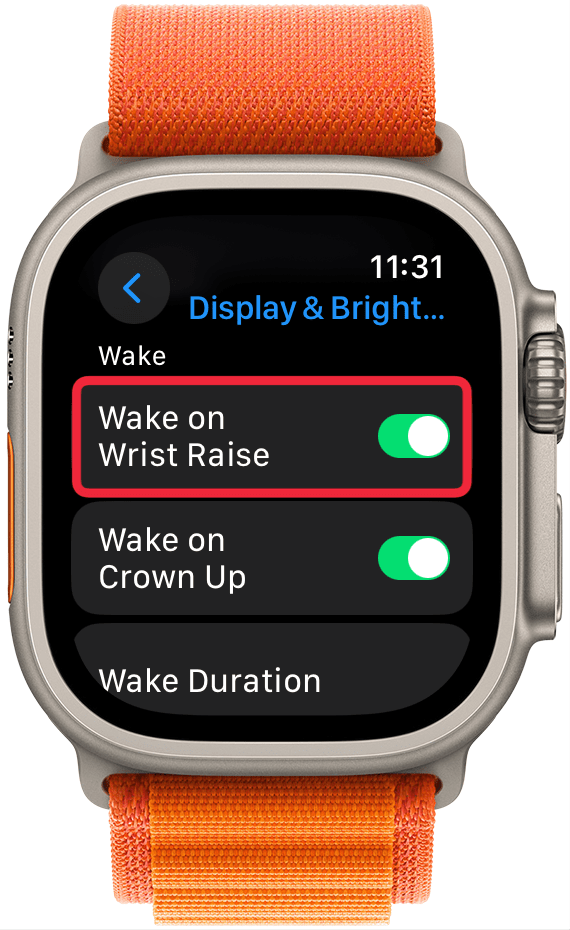
When you lift your wrist, the Apple Watch screen automatically lights up so you can glance at the time, notification, or complications. However, this function constantly wakes the Apple Watch up, even when we don’t intend to view the screen. You can, instead, turn off Raise to Wake and simply tap the screen when you want to view it. This will certainly help you save battery life over the course of the day.
- Open Settings on your Apple Watch.
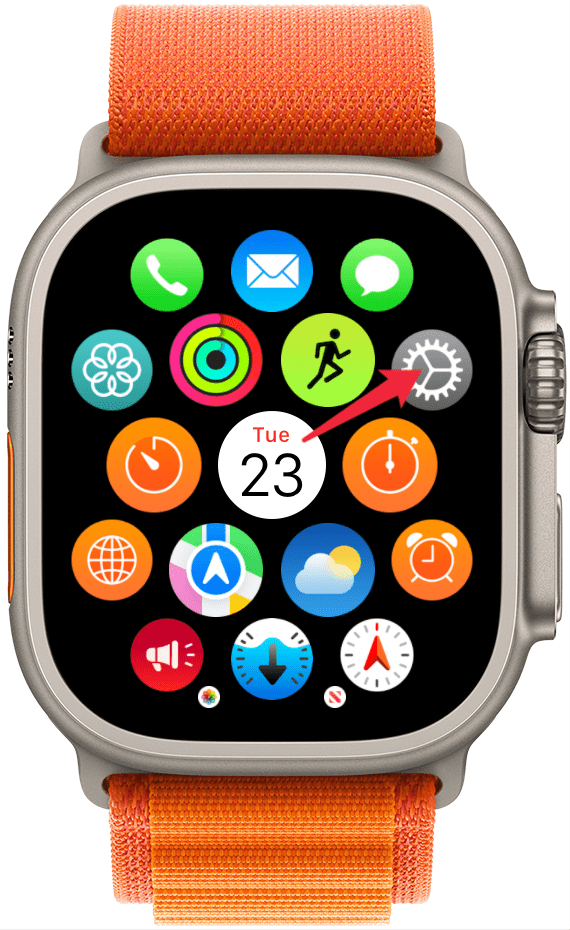
- Tap Display & Brightness.
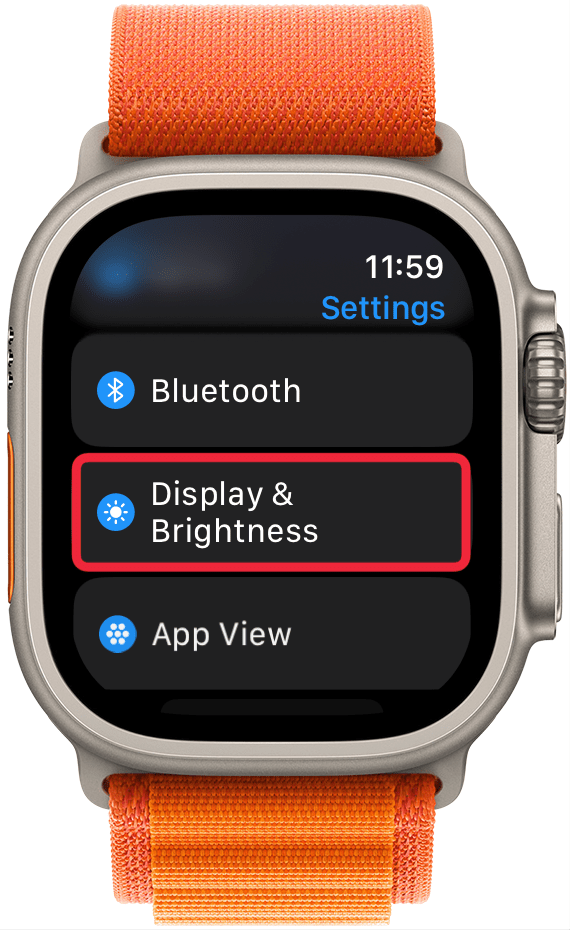
- Toggle off Wake on Wrist Raise. Toggling off Wake on Crown Up may also save on battery.

Now you know how to save battery on Apple Watch by turning off Wake on Wrist Raise!
Pro Tip
You can also save iPhone battery by taking a look at your phone's raise-to-wake settings.
5. Turn Off Environmental Noise Monitoring
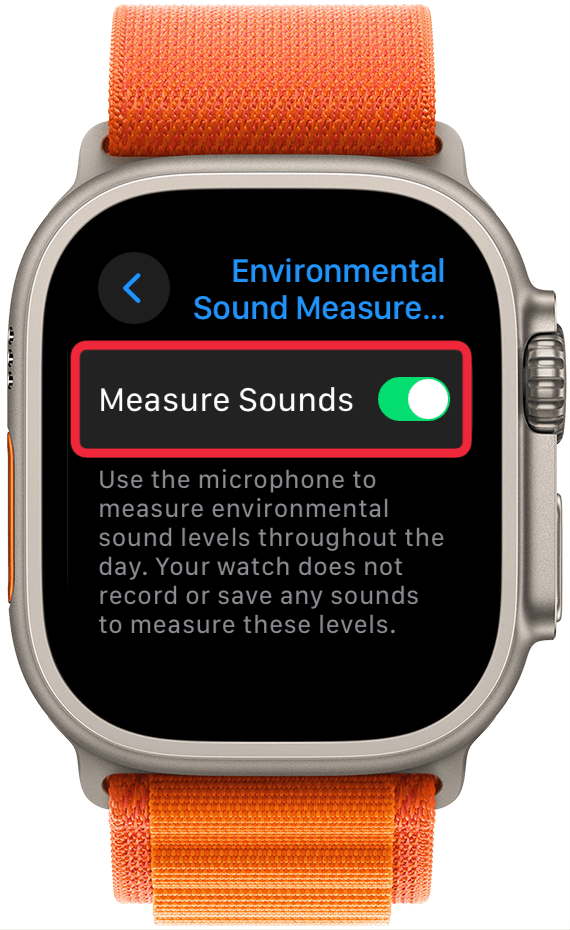
Having your Apple Watch monitor environmental noise levels around you and notifying you about noises over a certain decibel level is not a useful feature for everyone and results in your Apple Watch battery being drained faster than it should. Most users already know when they are in a loud environment, like at a concert. Plus, it can be annoying to get a loud environment notification when taking a shower or hearing your dog bark right next to you. Personally, I like to keep this Apple Watch battery-draining feature off, even though I do carry earplugs to protect my ears when things get loud.
6. Delete Apps You Don’t Use Or That Use Significant Energy
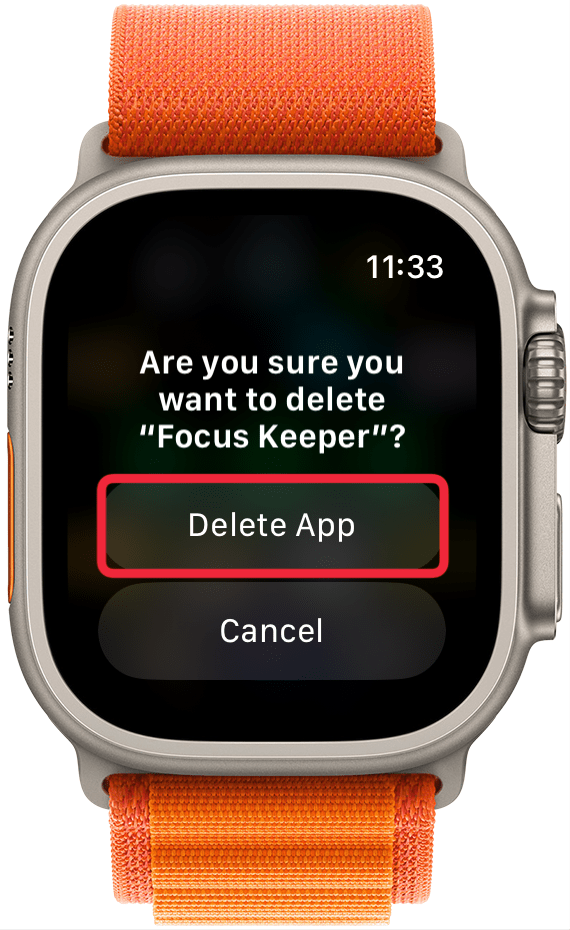
Even if you don’t actively use an app on your watch, it is likely communicating with your iPhone. It costs precious battery life for that information to go back and forth between your Apple Watch and phone. I recommend you delete apps on your Apple Watch on a monthly basis and only keep what you truly use on a daily or weekly basis.
Note
If you delete an app on your Apple Watch, even if it is a built-in one, it will not be deleted on your iPhone. However, if you delete an app on your iPhone, it will be deleted on your Apple Watch.
7. Reduce the Number of Notifications Your Apple Watch Receives
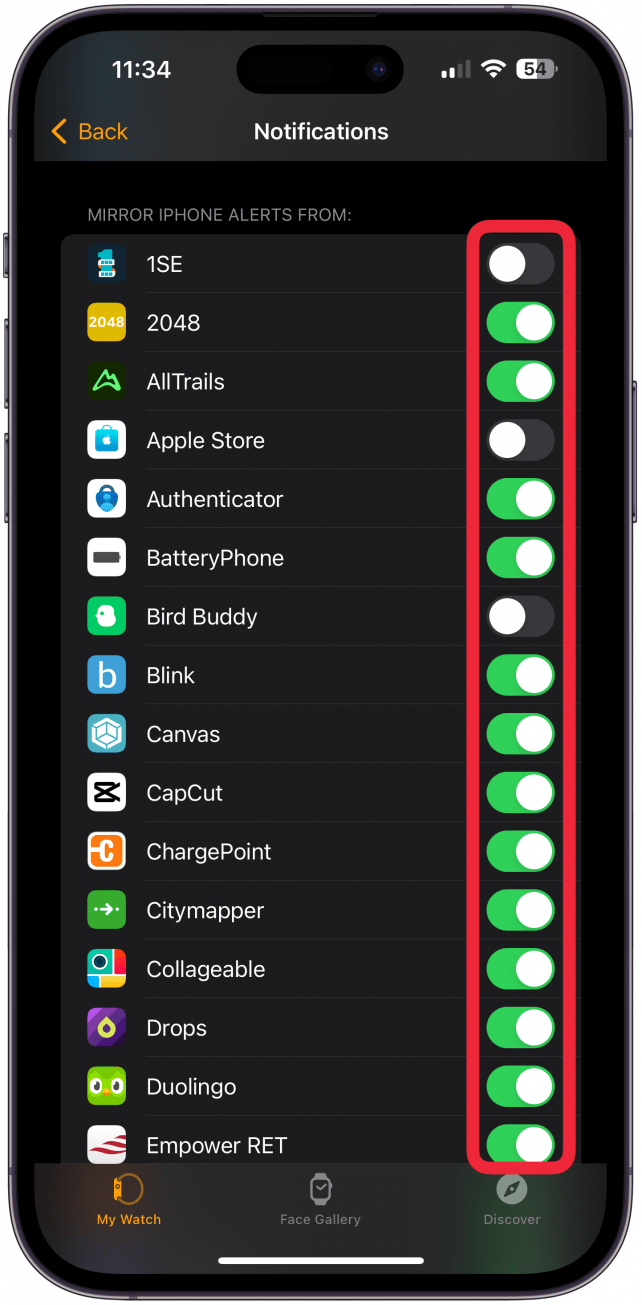
Extra notifications don't just waste your time; they also reduce the battery life of the Apple Watch. Even if you delete an app from your Apple Watch, you will still get the notifications from your iPhone as long as you have the Mirror iPhone Alerts feature turned on. To turn off unnecessary notifications and reduce Apple Watch battery drain:
- Open the Watch app and make sure you're on the My Watch tab.
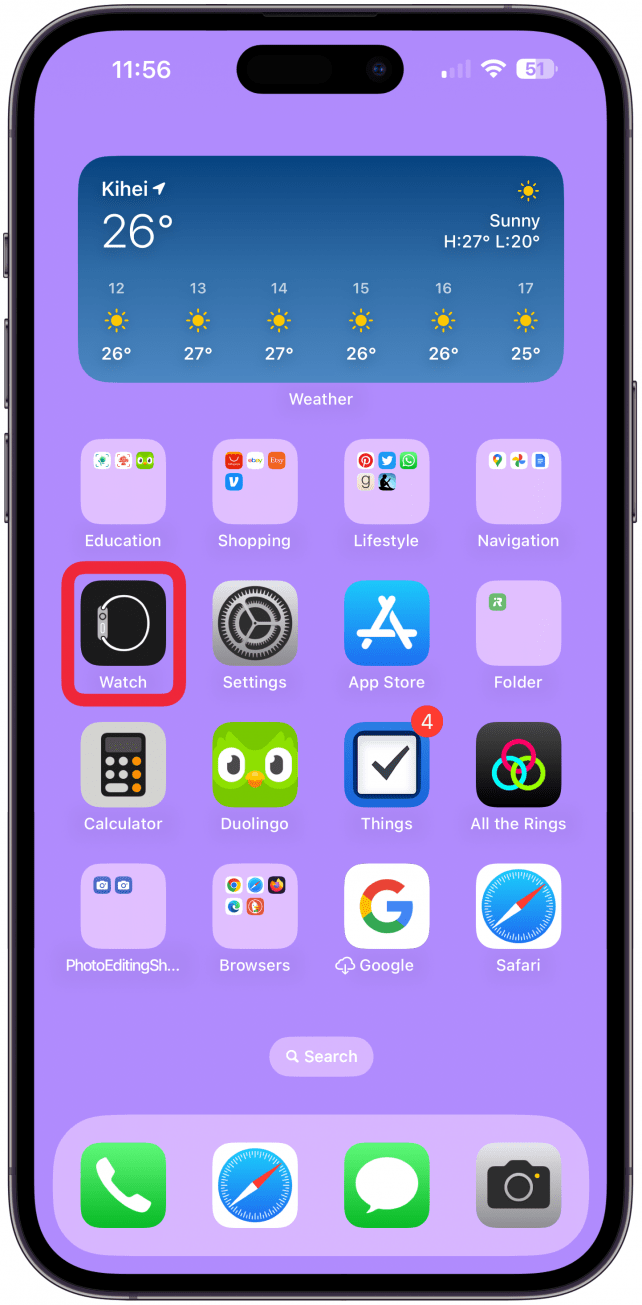
- Then, tap Notifications.
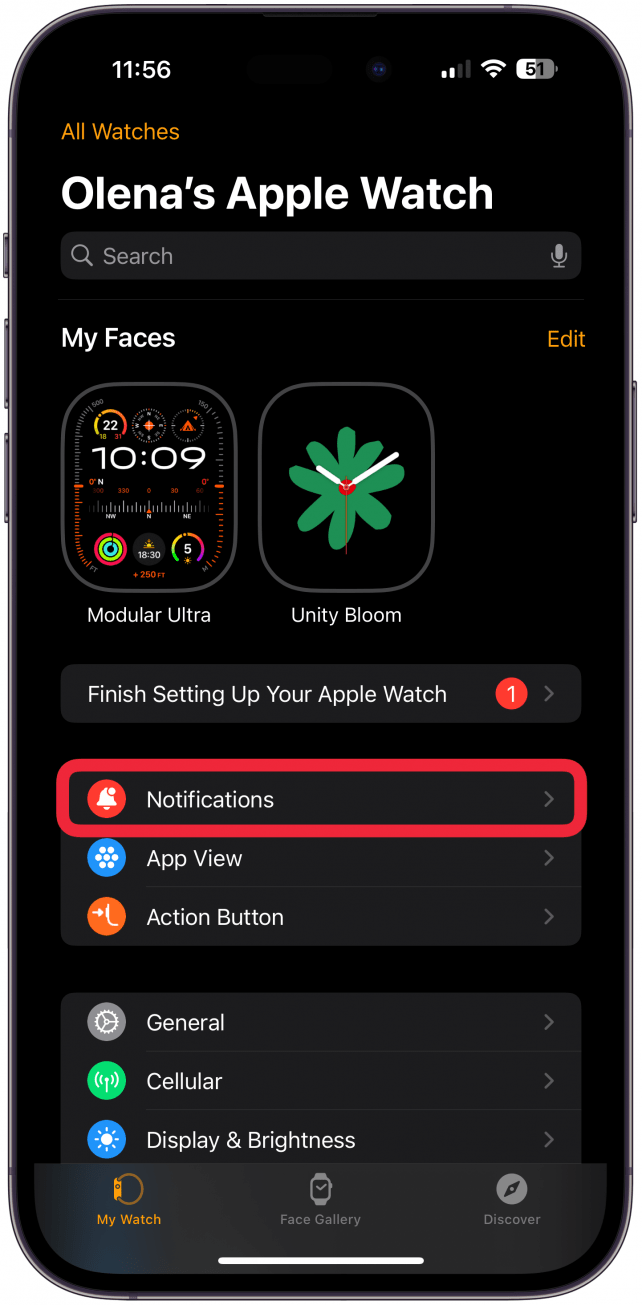
- Scroll down to the section labeled Mirror iPhone Alerts From. Look through the apps and toggle off alerts from any apps you don’t need notifications from.

8. Turn Off Background App Refresh to Save Apple Watch Battery
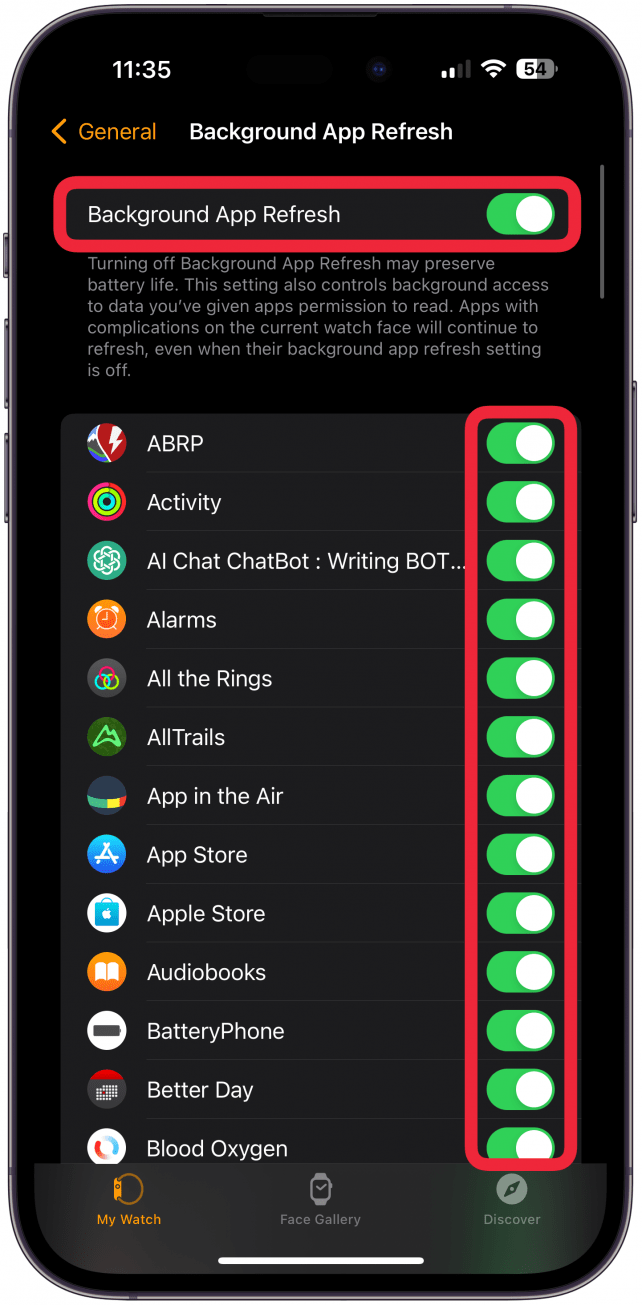
Background App Refresh automatically refreshes apps that are in the background so that the most recent information is displayed immediately when the app is opened. But having this function on means that any apps you have open in the background are draining your Apple Watch battery life. When you turn this off, only the apps used in the complications of your watch face will continue to refresh in the background:
- Open the Watch app on your iPhone and make sure you're in the My Watch tab. Then, select General.
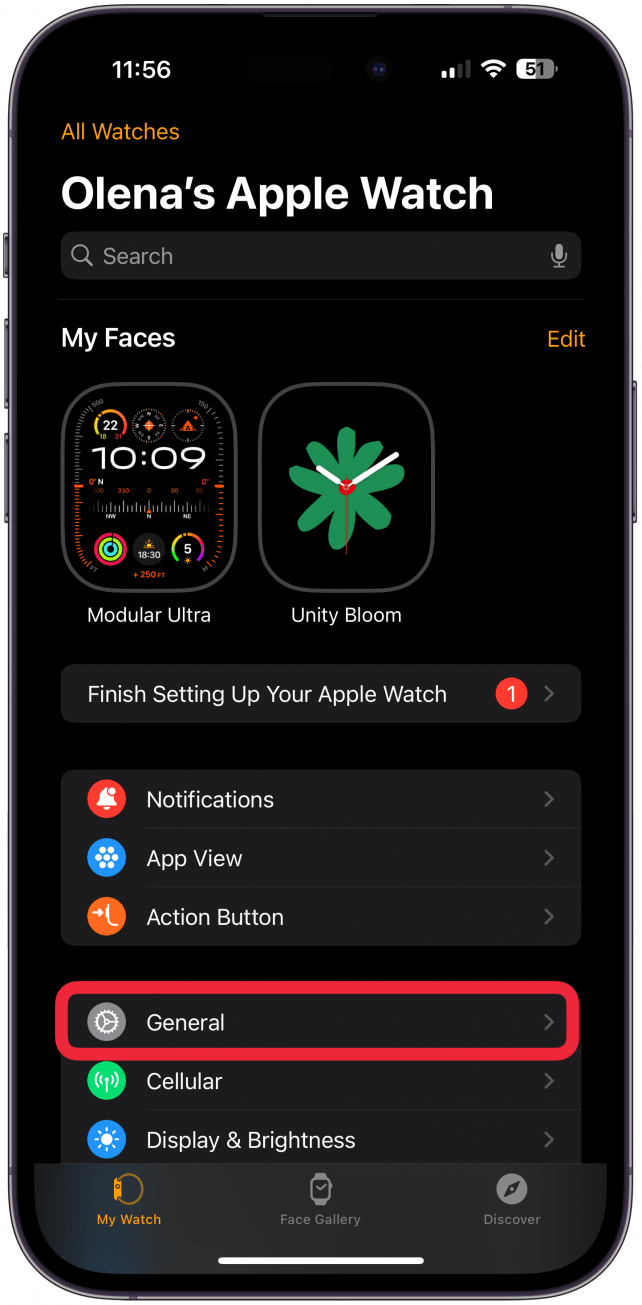
- Tap Background App Refresh.
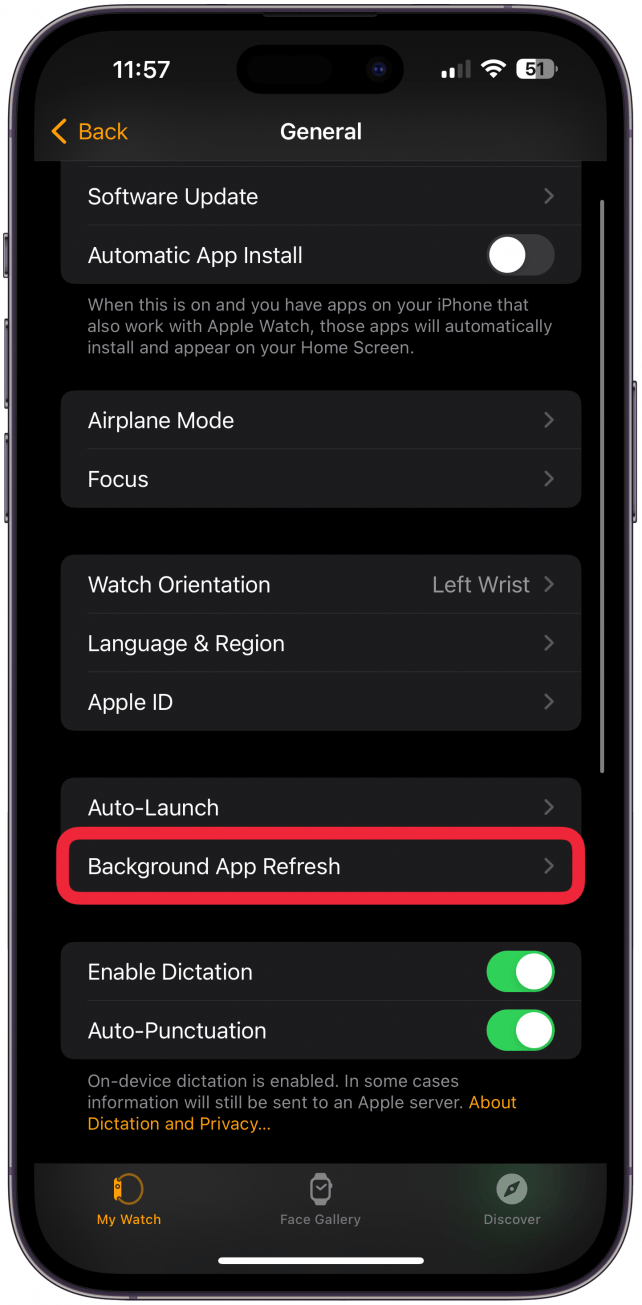
- Toggle off Background App Refresh. You can also selectively turn off Background App Refresh for specific apps if you don’t want to turn it off altogether.

9. Turn Off Automatic Uploads
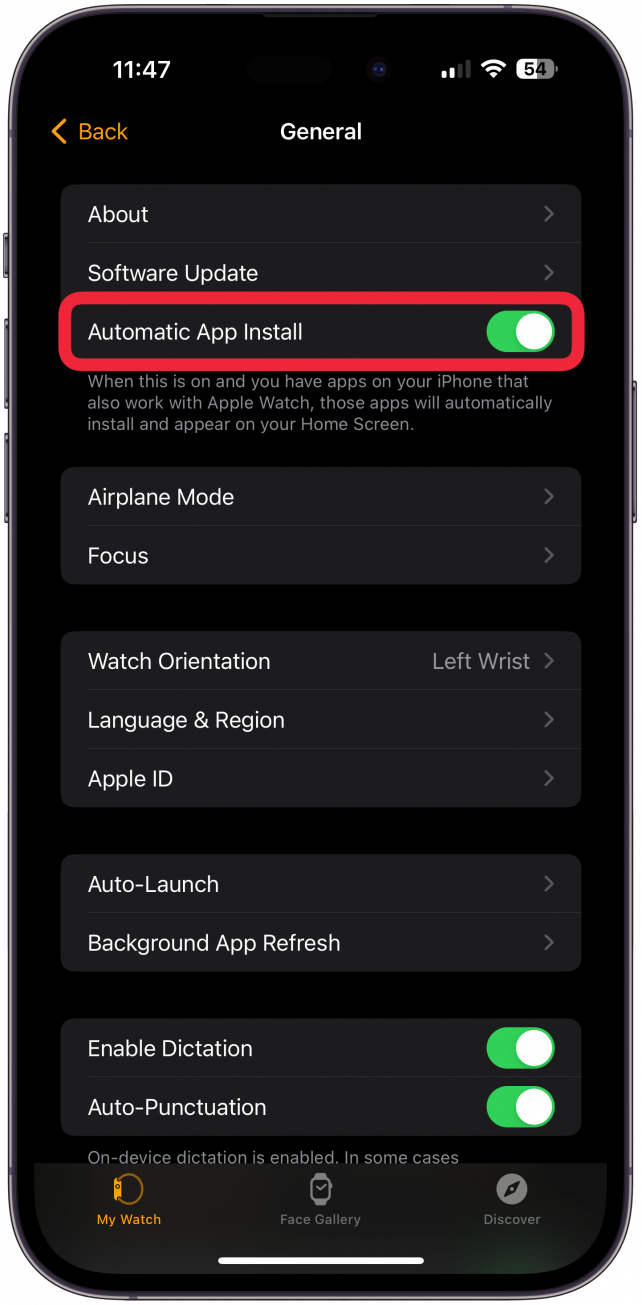
When you download an app on your iPhone, it automatically downloads to Apple Watch if there's an Apple Watch version of the app. This communication between devices takes up battery power. Turn off automatic downloads to save battery power and instead manually add apps you want to see on the Apple Watch within the My Watch tab instead. To turn off automatic downloads on Apple Watch:
- Open the Watch app on your iPhone and ensure you're on the My Watch tab. Then, select General.
- Toggle off Automatic App Install.
10. Use a Simple Watch Face to Save Apple Watch Battery
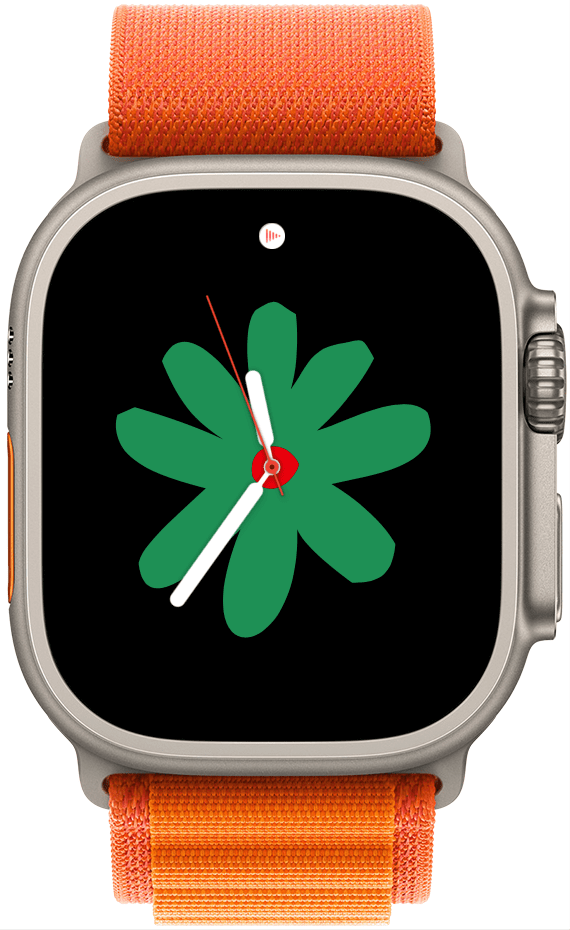
The simpler your watch face, the less power it uses. Also, black pixels on Apple Watch require less power than white or color pixels do. This means that switching to an Apple Watch face such as the Numerals, Utility, or Simple faces and not using complications can work to save a decent amount of battery life, especially if you're unwilling to turn off Raise to Wake. Here are the best Apple Watch faces that aren't huge battery drainers.
Of course, not using Apple Watch complications removes some of the functionality of the device, which is why this tip is further down on the list. It comes down to what's more important: extra battery life or using a prettier watch face with complications? You decide.
11. Turn Off Always-On Display
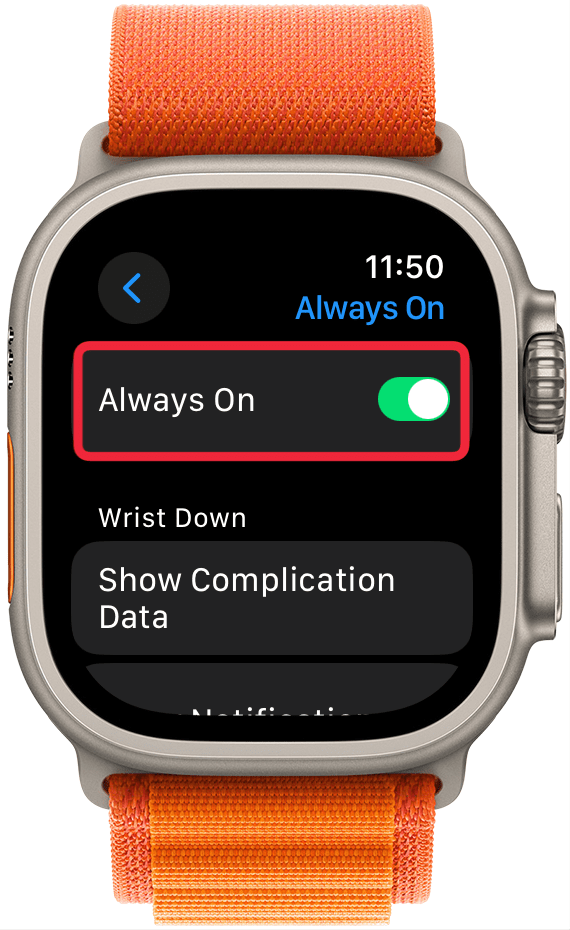
The Apple Watch Always On feature keeps your screen displaying the time and complications then dims when not in active use. This can significantly impact your battery life, plus some users find it irritating to have the screen turn on when they don’t want it to. I recommend turning off your Always-On Display to test it out and if you don’t like it or see a huge difference in battery life after a day or two, you can always turn it back on.
12. Do a Factory Reset & Re-Pair as New Watch
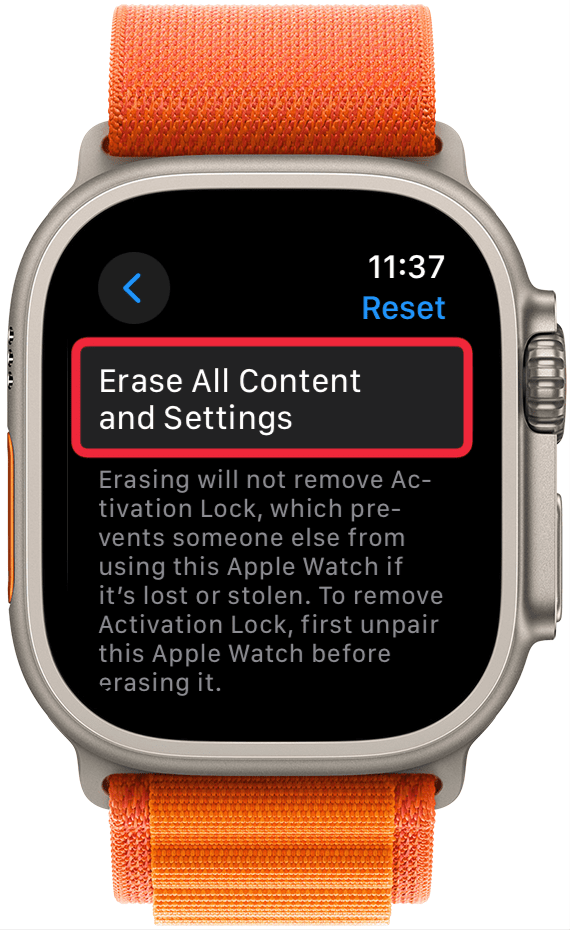
Warning
While this may save you some battery life, it will also revert to default settings. You might still need to go through these steps again to customize your device.
If you experience your Apple Watch not holding charge suddenly after months of working normally, the culprit could be a recent software update, a new power-hungry app, or a changed setting. Performing a complete Apple Watch factory reset and then re-pairing your watch as a new watch (not from backup) might fix everything. However, it will delete anything you’ve personalized and will revert your watch to its default settings. Since my Apple Watch Ultra went from lasting me 72 hours to less than 12 in under a year, this extreme step made sense for me, but you may want to try the other steps in this article first.
13. Bonus: Other Ways to Prevent Fast Apple Watch Battery Drain
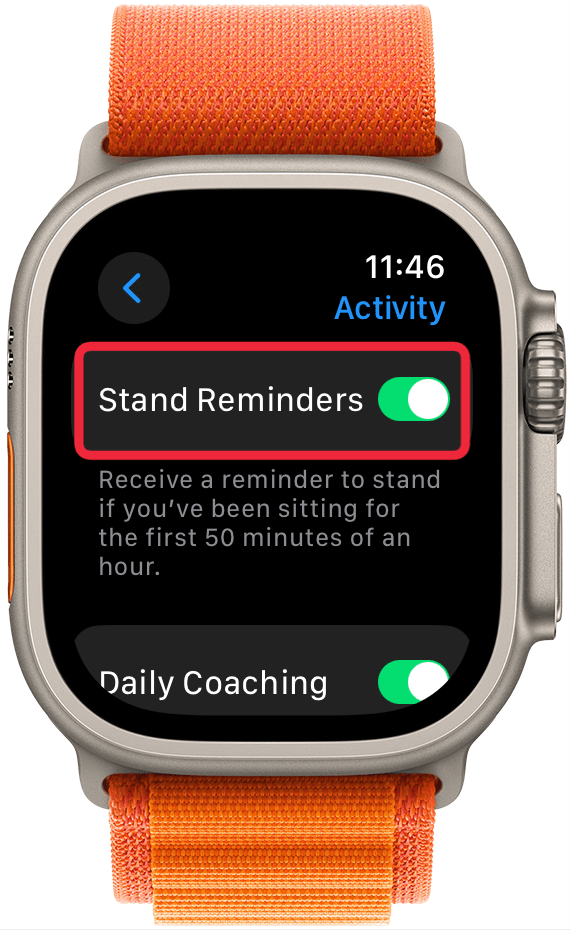
There are several other ways to save Apple Watch battery drain, but they are not necessarily as practical as the steps above, or the feature we recommend turning off is likely already off:
- Turn off the Apple Watch WalkieTalkie feature.
- Silence your Apple Watch.
- Make sure your iPhone and Apple Watch have Bluetooth enabled so that your Apple Watch doesn't have to use Wi-Fi (or Cellular), which will take more data.
- Turn down your watch’s screen brightness in your Apple Watch’s Display & Brightness settings under Appearance.
- For long-stance races like a 100-mile run, have your watch automatically turn Apple Watch Low Power mode on during workouts in your watch’s Workout settings. You can also toggle on Fewer GPS and Heart Rate Readings, which will only record your GPS reading once every two minutes and will update your heart rate once per minute.
- Turn off haptic alerts in your iPhone's Watch app. In the My Watch tab, tap Sounds & Haptics and toggle off Haptic Alerts.
- Reduce wake screen time in your Apple Watch’s Display & Brightness settings under Wake Duration.
- Turn off the Optimized Charging Limit in your Apple Watch’s Battery settings under Battery Health.
- Turn on the Unlock Apple Watch with iPhone feature.
- Turn on grayscale in your iPhone's Watch app. In the My Watch tab, tap Accessibility and toggle Grayscale on.
- Turn off activity reminders in your Apple Watch’s Activity settings. You can turn off Stand Reminders, Daily Coaching, Goal Completions, Special Challenges, and/or Activity Sharing Notifications.
- Turn on Sleep Mode or another Focus Mode, as long as you remember to disable sharing your Focus mode across devices if you still want to receive notifications on your other Apple devices.
- Turn off Bluetooth, Wi-Fi, and Cellular in your Apple Watch’s Control Center.
- Turn off Heart Rate Monitoring and other health readings in your Apple Watch’s Privacy & Security settings, under Health.Here you can select Heart Rate, Blood Oxygen, Wrist Temperature, Respiratory Rate, and Time in Daylight and turn them off if you wish.
- Reduce Transparency & Motion in your Apple Watch’s Accessibility settings under Reduce Motion.
- Turn your watch off temporarily until you can charge it.
How Do You Charge an Apple Watch to Preserve Battery Lifespan
Apple is pretty clear on this: Lithium-ion batteries should be cared for and can last a long time if you follow some simple steps.
- Be careful about which chargers and cables you use. Using cables or adapters that aren't rated as safe and effective for Apple products is one of the fastest ways to ruin your Apple Watch battery.
- Take note of the general best practices for maximizing your lithium-ion battery (this article is about iPhones, but it can be applied to Apple Watches as both have lithium-ion batteries).
Pro Tip
Apple Watch 7 introduced fast charging, so learn how to do it on compatible models (Apple Watch 7 and newer) and make sure you always use the quickest charging option.
Now you know a lot more about Apple Watch battery health and how to prevent quick drain. We hope these tips have your watch lasting as long as it did when you first took it out of its box! Next, learn how to know if your Apple Watch is charging or how to silence your iPhone with Apple watch Theater Mode.
FAQ
- How do you charge Apple Watch without charger? You can charge your Apple Watch using an a third-party alternative; there are even 3-in-1 chargers that can be used by multiple Apple devices at once.
- How long do Apple Watches last? Apple Watches can last for up to five years, and Apple supports its watches for a long time; even the Apple Watch Series 4 can run the latest watchOS 10.
- How do you control your Apple Watch with your iPhone? You can control your Apple Watch with your iPhone, which lets you navigate it remotely or use your watch on a larger screen.
- How do you check Apple Watch battery on your iPhone? You can check your Apple Watch battery in your iPhone's Today View. You can also add a Batteries Widget to your iPhone.

Olena Kagui
Olena Kagui is a Feature Writer at iPhone Life. In the last 10 years, she has been published in dozens of publications internationally and won an excellence award. Since joining iPhone Life in 2020, she has written how-to articles as well as complex guides about Apple products, software, and apps. Olena grew up using Macs and exploring all the latest tech. Her Maui home is the epitome of an Apple ecosystem, full of compatible smart gear to boot. Olena’s favorite device is the Apple Watch Ultra because it can survive all her adventures and travels, and even her furbabies.
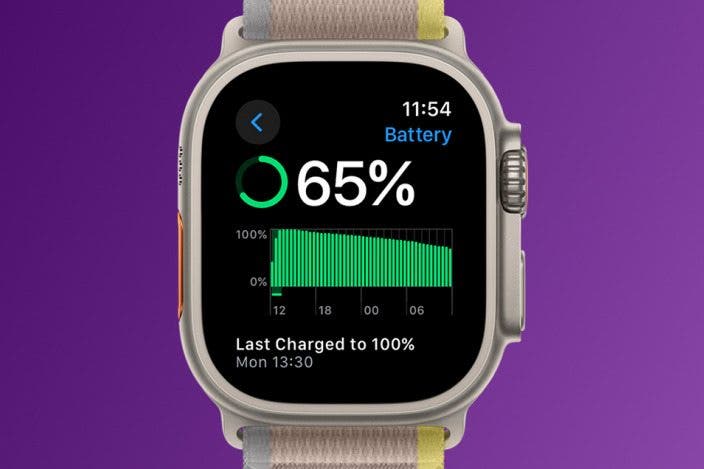

 Leanne Hays
Leanne Hays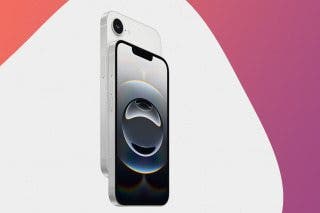
 Olena Kagui
Olena Kagui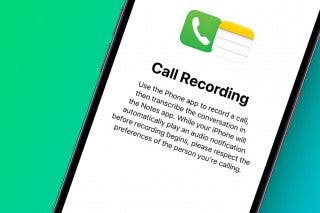
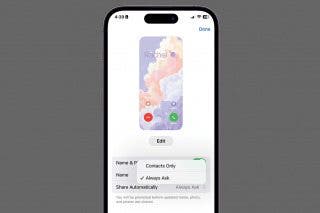
 Rachel Needell
Rachel Needell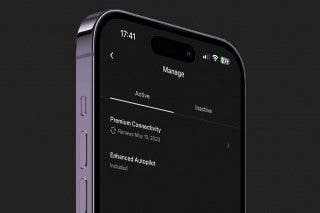
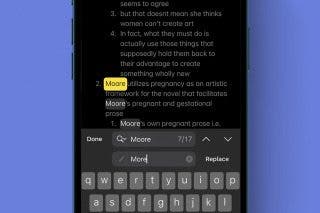
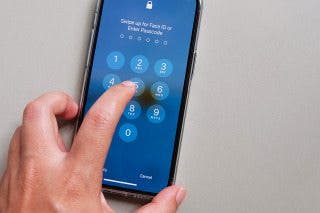
 Cullen Thomas
Cullen Thomas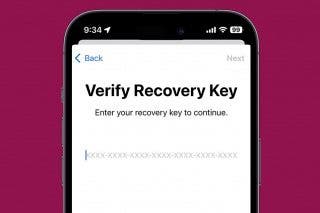
 Rhett Intriago
Rhett Intriago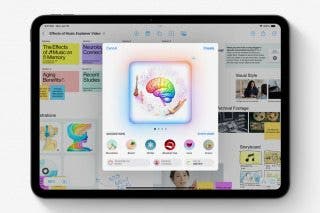
 Amy Spitzfaden Both
Amy Spitzfaden Both